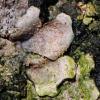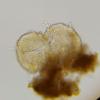
15-12-2025 07:09
 Danny Newman
Danny Newman
indet. Rutstroemiaceae sp. on unk. fallen leavesMc

15-12-2025 21:11
 Hardware Tony
Hardware Tony
Small clavate hairs, negative croziers and IKI bb

15-12-2025 15:54
 Johan Boonefaes
Johan Boonefaes
Unknown anamorph found on the ground in coastal sa

15-12-2025 15:48
 Danny Newman
Danny Newman
Melanospora cf. lagenaria on old, rotting, fallen

15-12-2025 07:05
 Danny Newman
Danny Newman
Pseudosclerococcum golindoi (det: Zotto)near Cosb

15-12-2025 11:49
 Danny Newman
Danny Newman
ITS sequences from the following two collections B

15-12-2025 12:34
 Danny Newman
Danny Newman
indet. Rhytismataceae on oak leafnear Purchase Roa

09-12-2025 12:06
 Andgelo Mombert
Andgelo Mombert
Bonjour,Je recherche l'article concernant Hypobryo
Nectriopsis rubefaciens?
Niek Schrier,
16-01-2022 18:26
I found a (lichenicolous?) fungi growing on thallus of Parmelina pastillifera. From a macro perspective, they look like Nectriopsis rubefaciens: small fuiting bodies wit perithecial hairs. However, the spores I sofar see in my samples are not corresponding with the spores of N. rubefaciens. The are 1-celled, 12,1 - 15,9 x 2,5-3,2 micrometer (1 div = 2,9 um).
Does anyone know what species this is? Thanks in advance!
Kind regards,
Niek Schrier
Franz Berger,
16-01-2022 20:14

Re : Nectriopsis rubefaciens?
The determination is correct! The actual name is Trichonectria r. now, due to some marginal discriminating features to Nectriopsis, (which has not been valuated by gen sequences until now).
To my knowledge, Parmelina pastillfiera is a new host lichen!
Franz Berger
To my knowledge, Parmelina pastillfiera is a new host lichen!
Franz Berger
Niek Schrier,
16-01-2022 21:04
Re : Nectriopsis rubefaciens?
Thank you for the conformation Franz! So the spores can variate for this species? Or are these undeveloped 1-celled spores which become the 2-celled spores I see in documentation about this species?
I also cound not find any note for this species hosting on Parmelina pastillfiera, but did read it hosts on Parmeliaceae, indicating it has a lot of hosts to choose from.
Niek Schrier
I also cound not find any note for this species hosting on Parmelina pastillfiera, but did read it hosts on Parmeliaceae, indicating it has a lot of hosts to choose from.
Niek Schrier
Franz Berger,
17-01-2022 14:21

Re : Nectriopsis rubefaciens?
It was supposed by some authors, that T.rubefaciens could be an agglomerate of species. There are not so many hosts known till now, mostly it was found on Parmelia sulcata and P.saxatilis agg. I have a collection on Flavoparmelia caperata with much longer ascospores, affirming this hypothesis. And one on Parmelina tiliacea.
1-celled ascospores might be very young ones or mature broken into 2 parts. Irregularities can be observed sometimes, Not only in T.rubefaciens.
Keep an eye on this specimen. I was informed recently, that a working group in Krakau is starting to investigate Hypocreales in nearer future.
Yours
Franz
1-celled ascospores might be very young ones or mature broken into 2 parts. Irregularities can be observed sometimes, Not only in T.rubefaciens.
Keep an eye on this specimen. I was informed recently, that a working group in Krakau is starting to investigate Hypocreales in nearer future.
Yours
Franz





